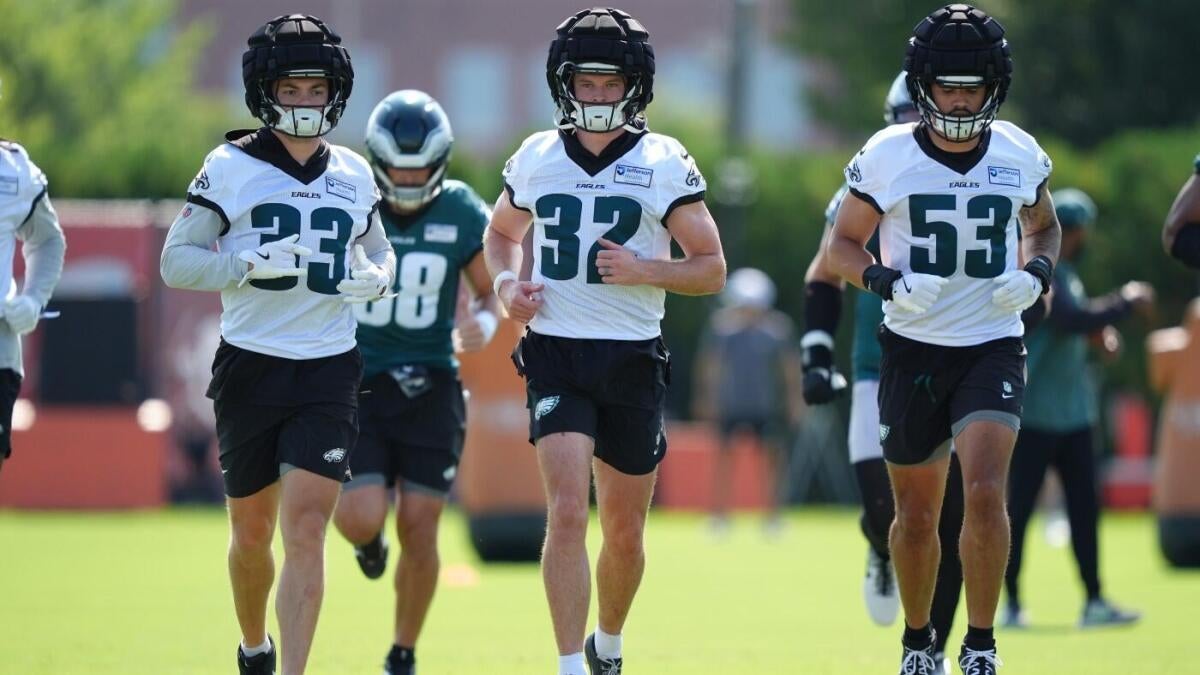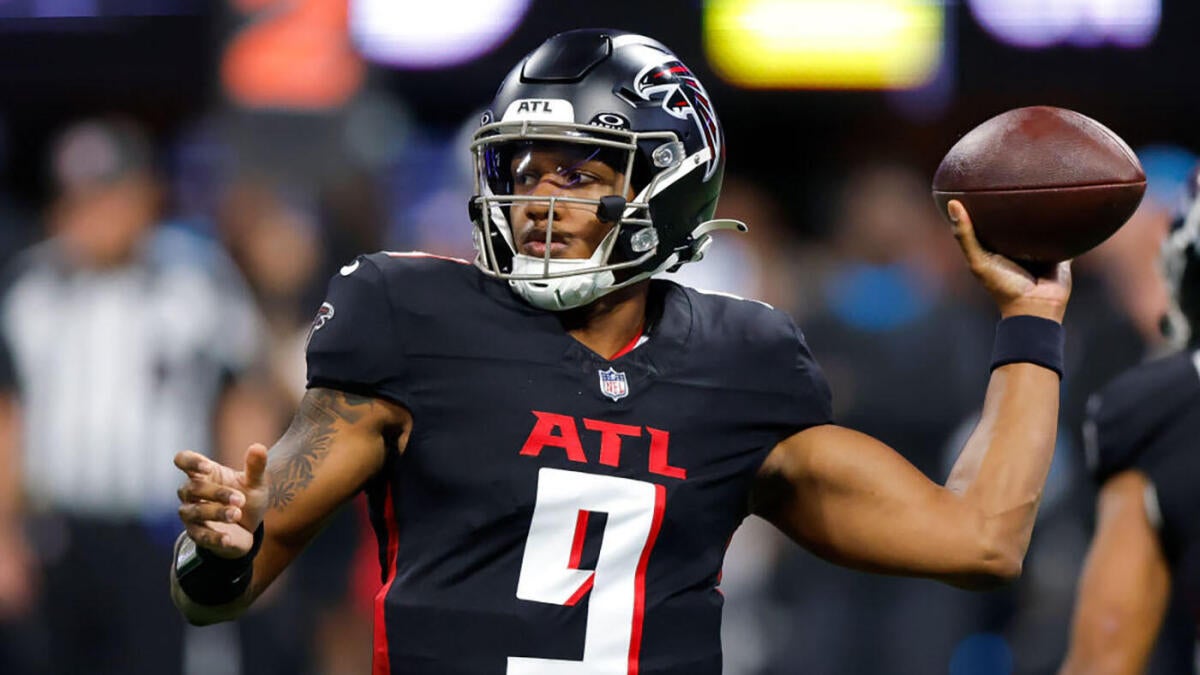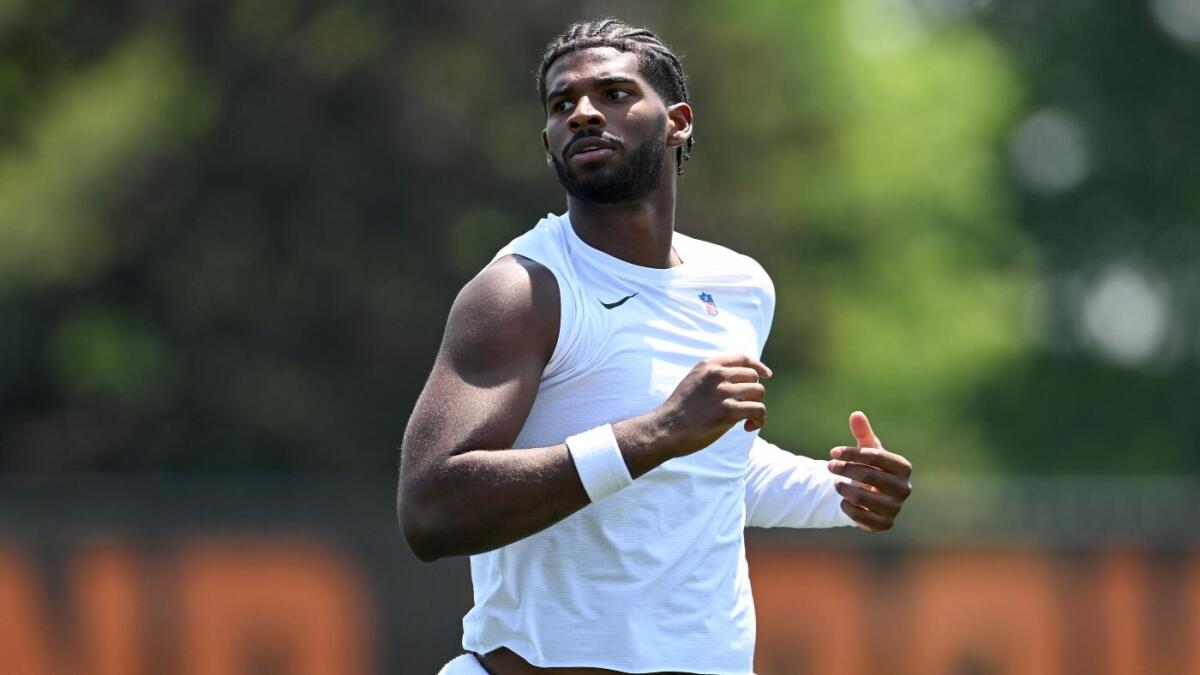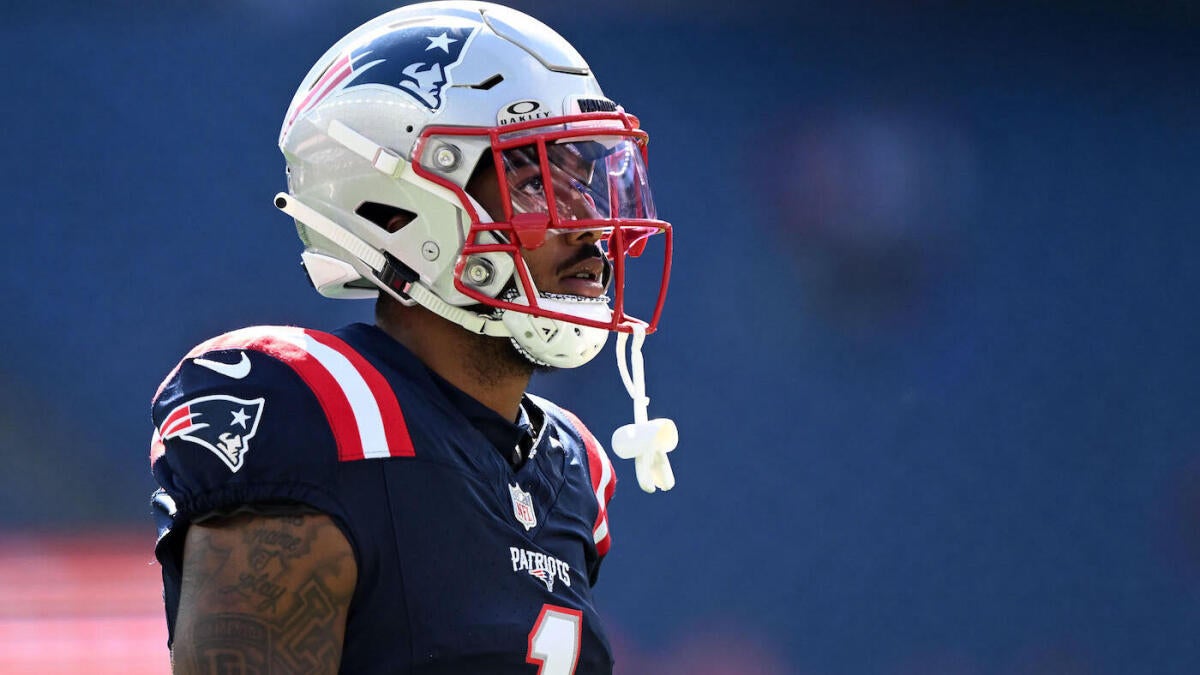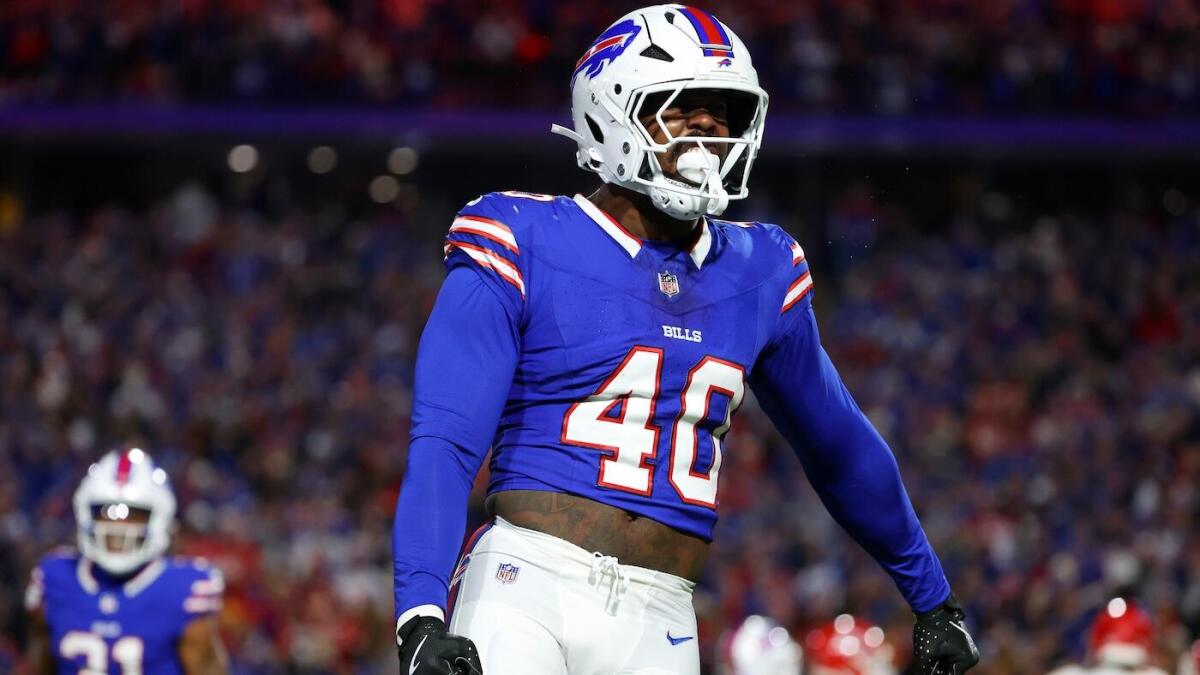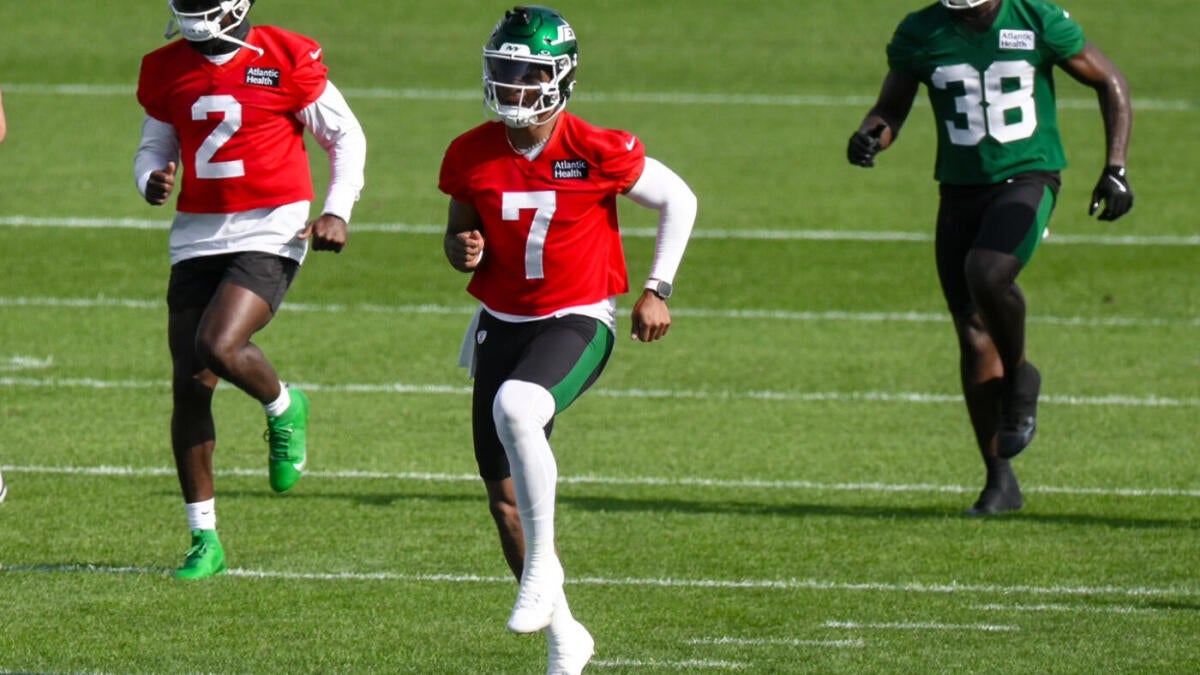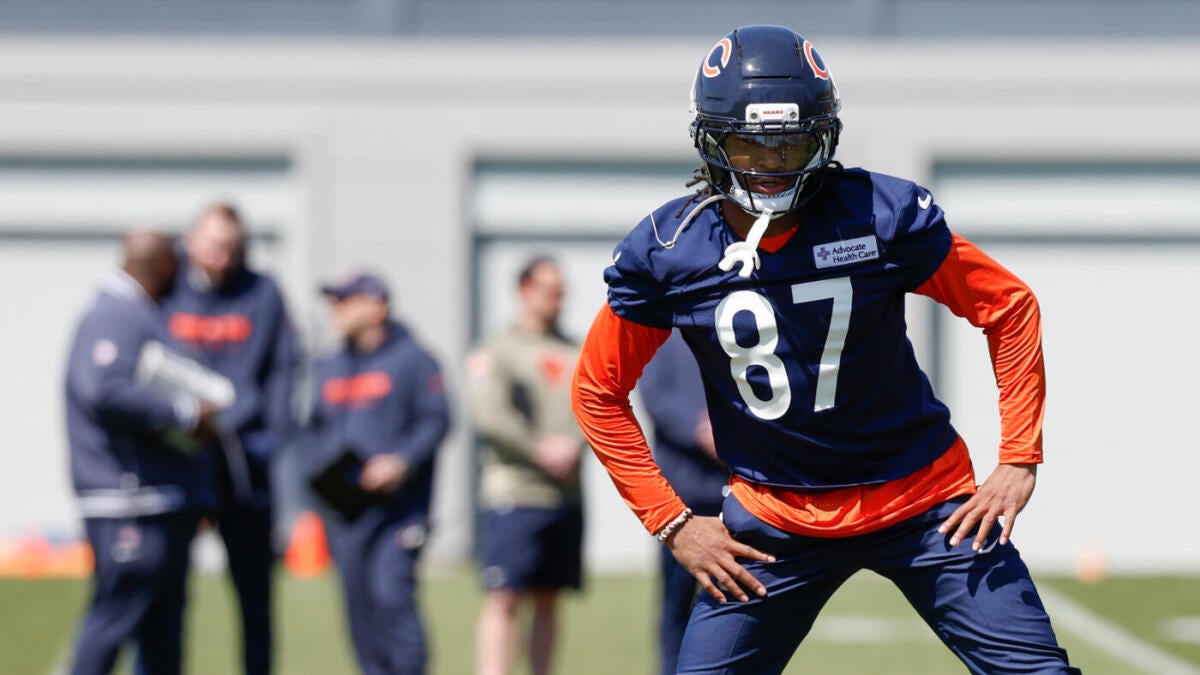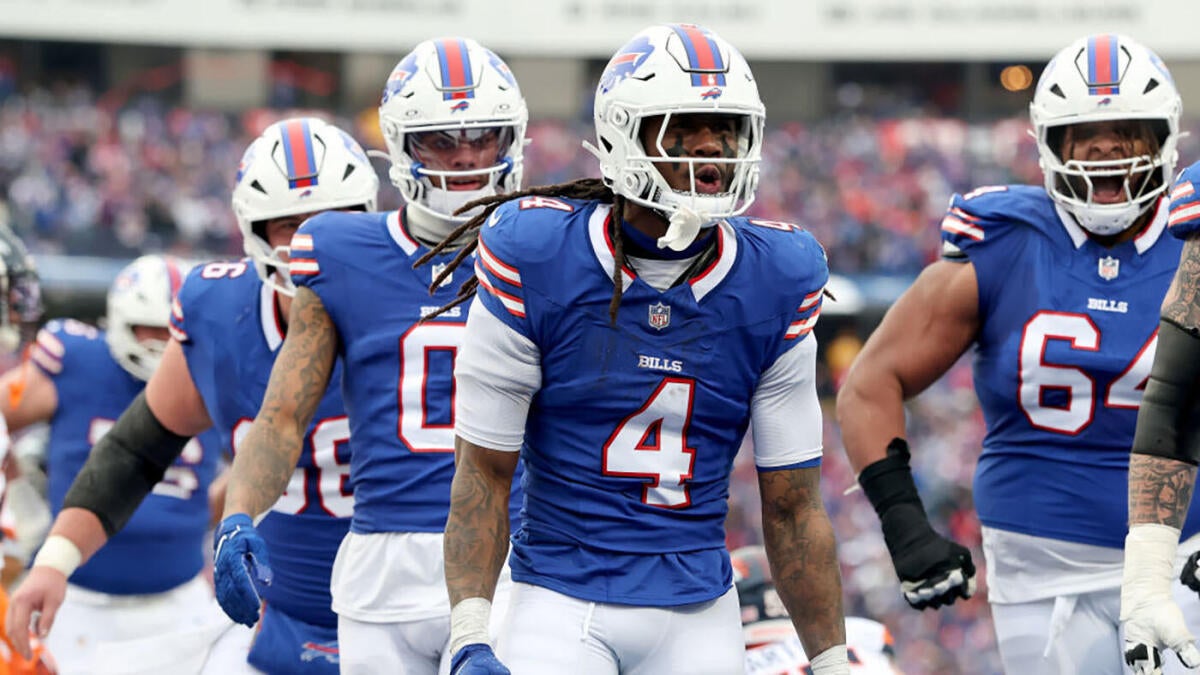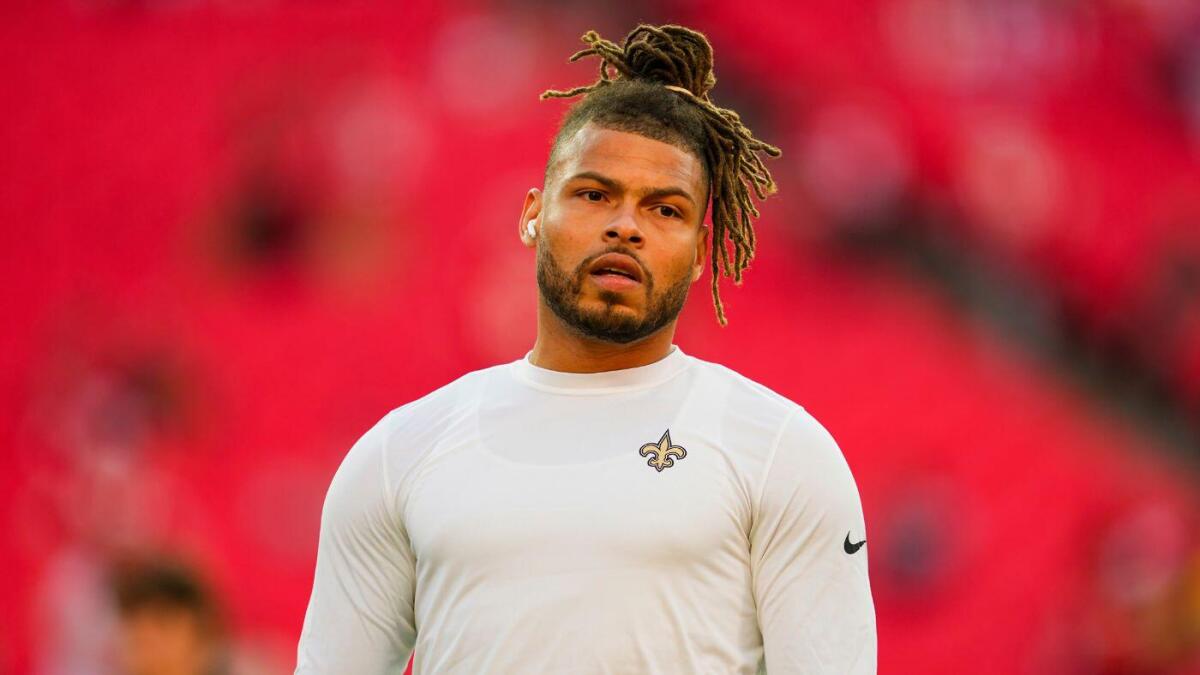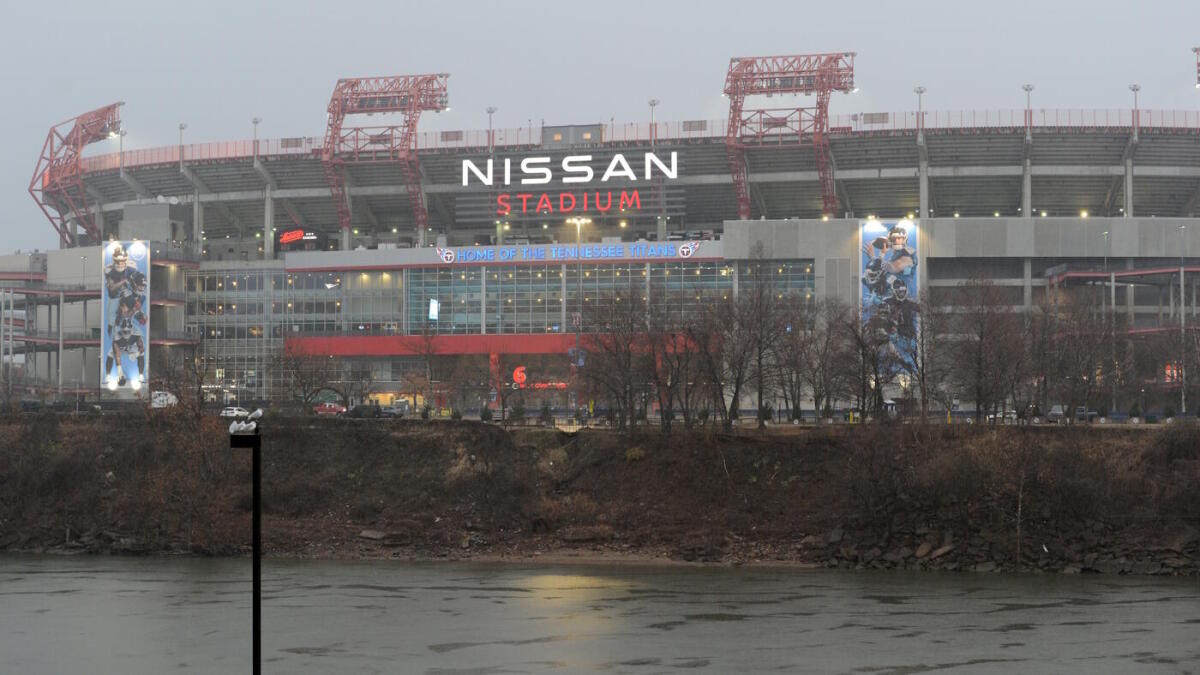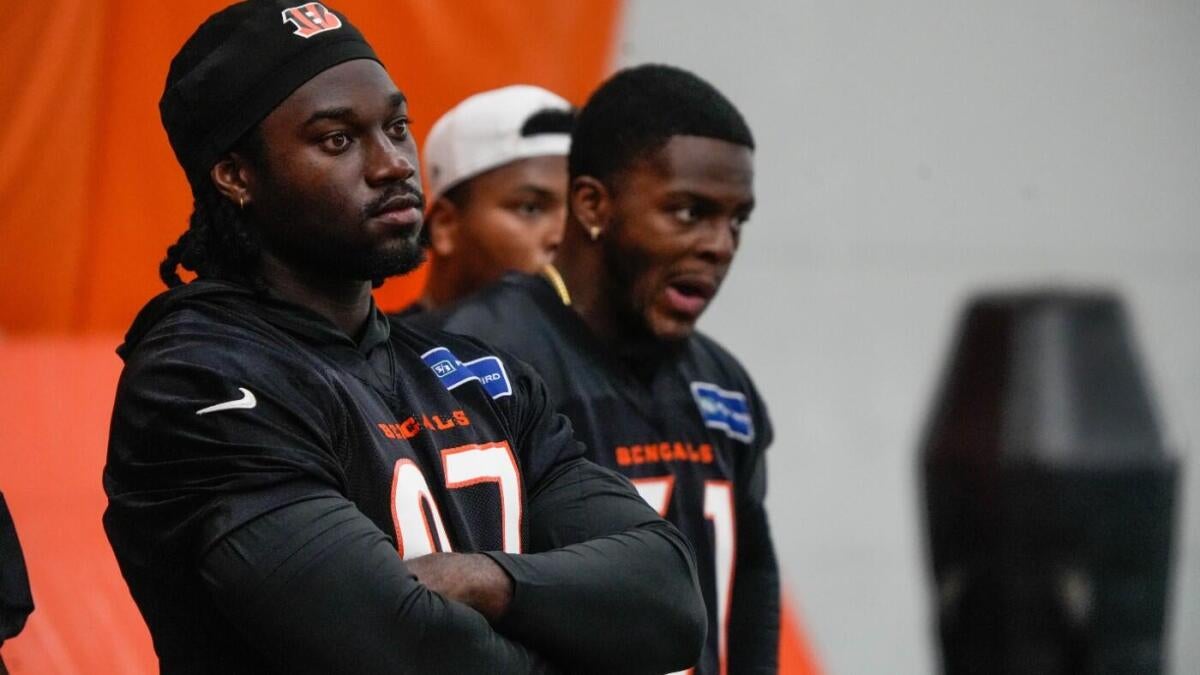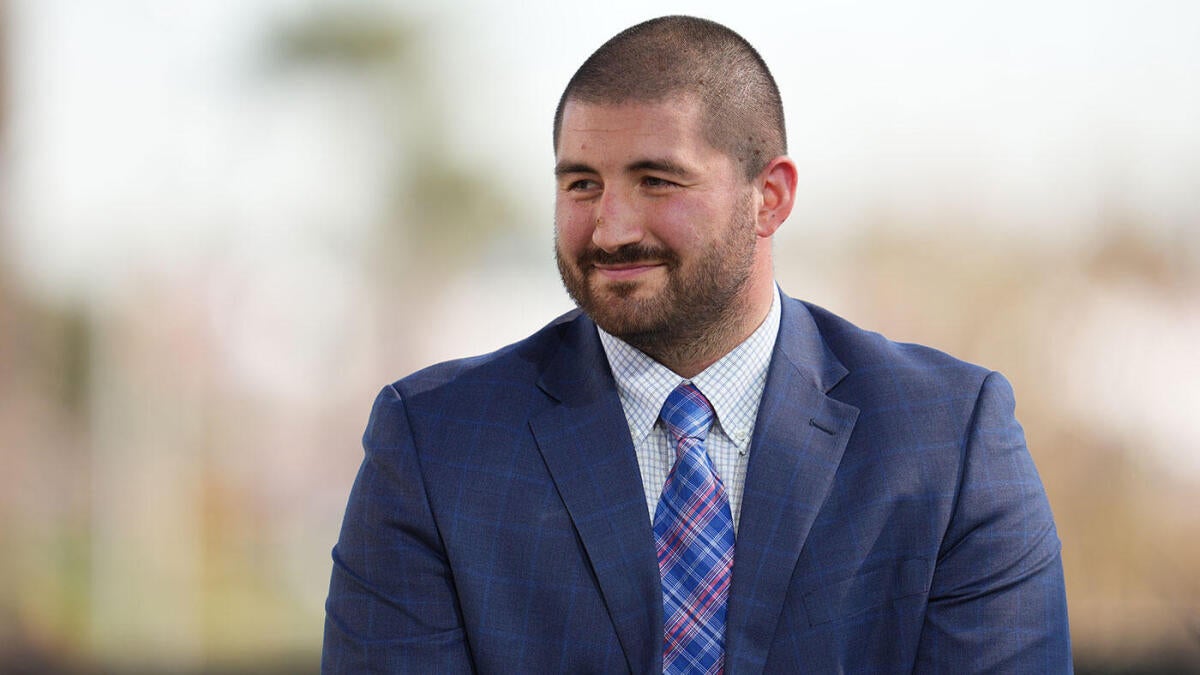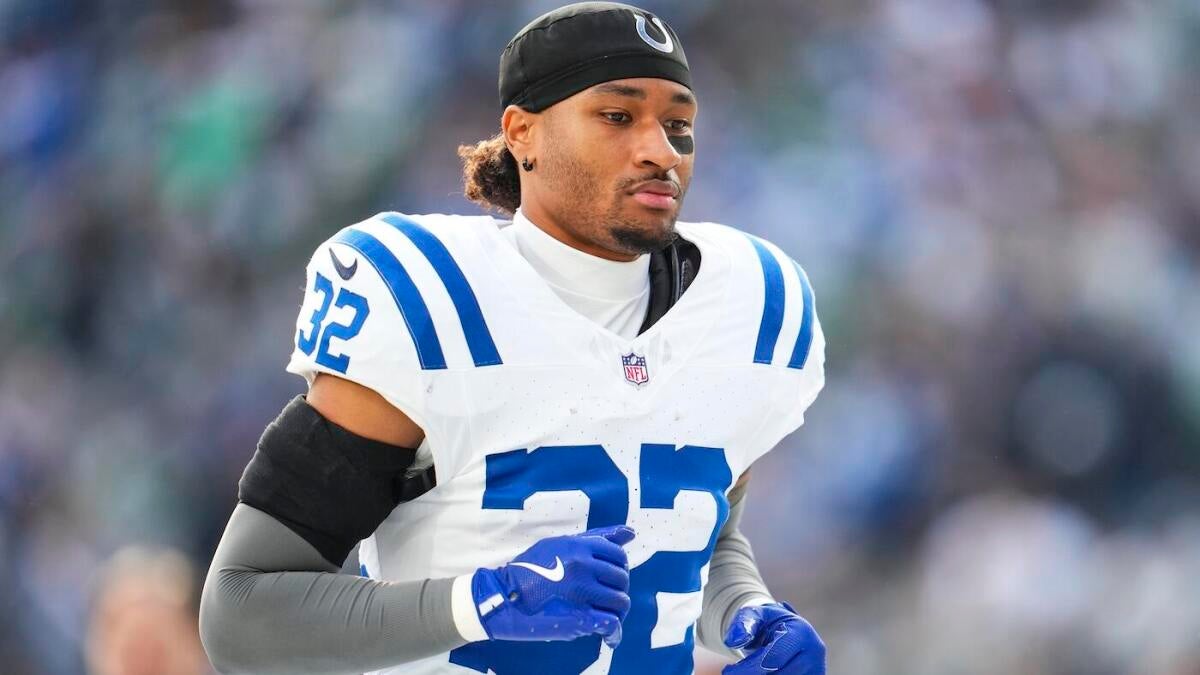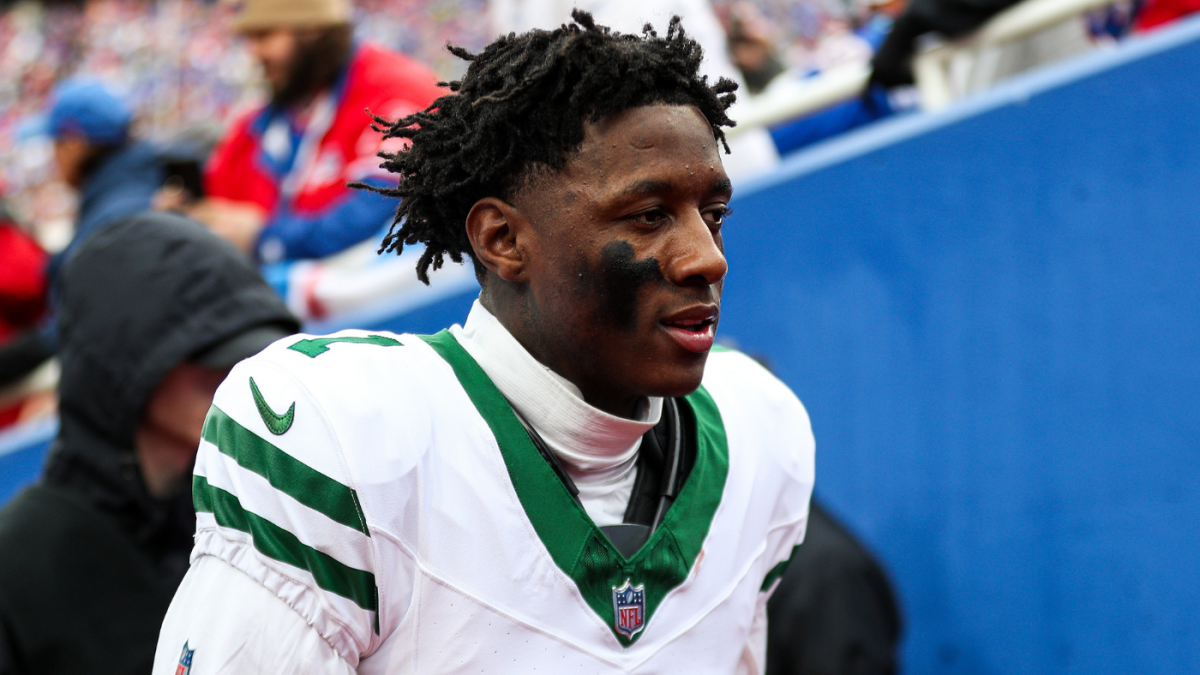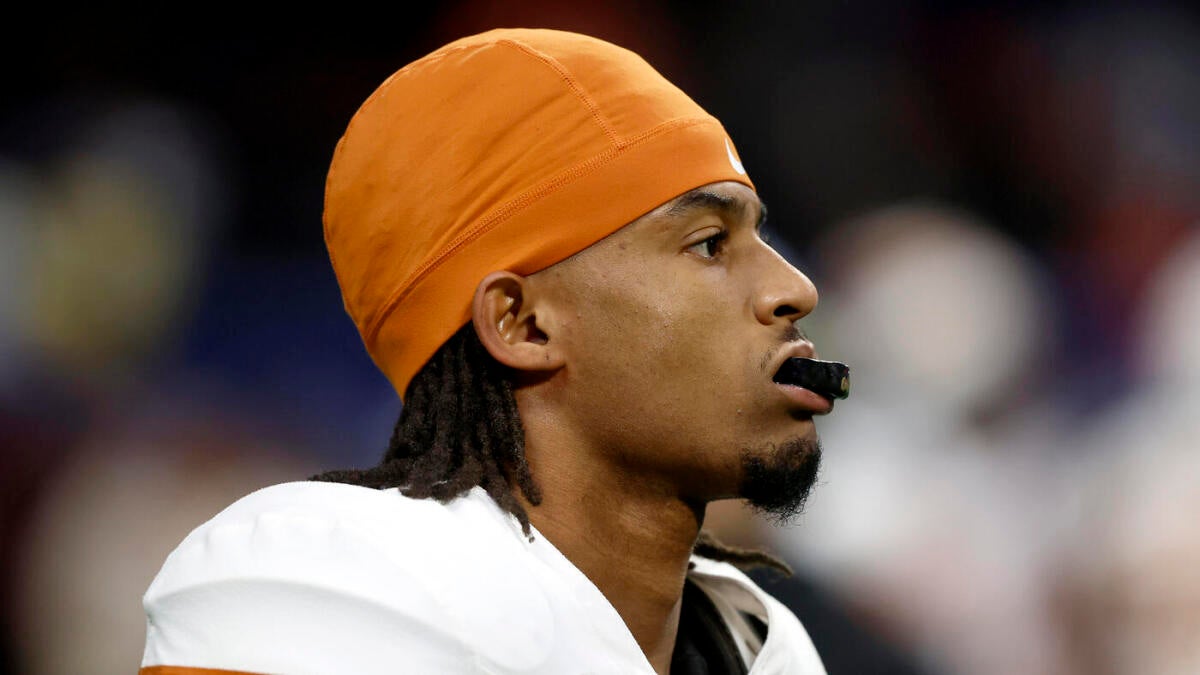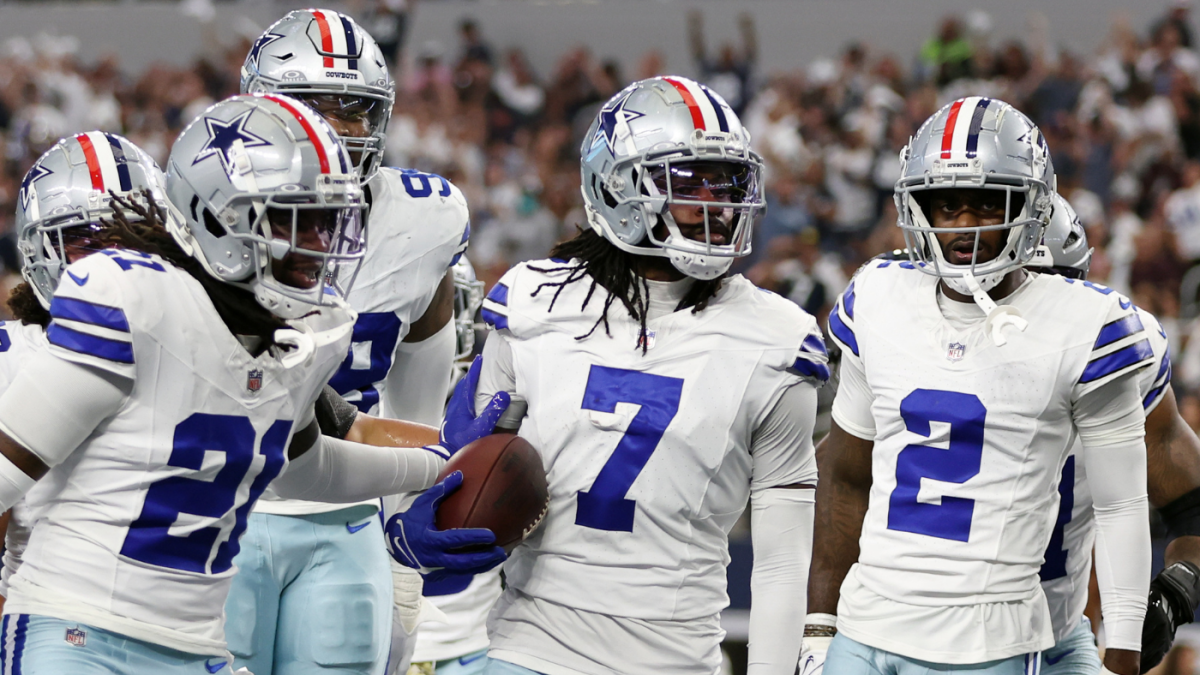
The contract dispute between the Cincinnati Bengals and Trey Hendrickson took a wrong turn on Tuesday when the All-Pro edge rusher didn’t report to training camp with the rest of the team’s veteran players. Instead, Hendrickson left Cincinnati to return to his home in Jacksonville, Florida.
Bengals president Mike Brown had expressed confidence that an agreement could be reached at the team’s annual media luncheon on Monday. “I think we’re in a good spot. I hope this thing comes together soon, and I’m going to leave it at that,” Brown said.
Hendrickson painted a different picture about negotiations on Tuesday. According to NFL Network analyst Manti Te’o, who spoke to Hendrickson, his former teammate with the New Orleans Saints called the Bengals’ latest offers, especially the guarantees, “atrociously, atrociously low.” Dianna Russini of The Athletic got from Hendrickson that he had been willing to take less in some ways in an effort to get a deal done.
Hendrickson has been adamant that he won’t play for the Bengals in 2025 under his current contract. The 2024 NFL Defensive Player of the Year runner-up is in a contract year. Hendrickson is scheduled to make $16 million in 2025 on an $18,666,668 cap number. The $16 million consists of a $15.8 million base salary and $200,000 of per-game roster bonuses ($11,764.70 for each game active).
Hendrickson didn’t attend Cincinnati’s voluntary offseason workouts because of dissatisfaction with his contract. He subjected himself to a $104,768 fine by skipping the three-day mandatory minicamp held in June. Hendrickson will be fined $50,000 for each day of training camp he misses. As a player on a veteran contract, this daily fine is mandatory and can’t be reduced or waived by the Bengals.
It shouldn’t be too difficult to break the contract impasse after T.J. Watt became the latest data point in an escalating pass rusher market. The Pittsburgh Steelers just made Watt the NFL’s highest-paid non-quarterback at $41 million per year ahead of Bengals wide receiver Ja’Marr Chase, who signed a four-year, $161 million contract extension, averaging $40.25 million per year, in March. Watt’s three-year, $123 million extension has a non-quarterback record $108 million fully guaranteed at signing.
Although Hendrickson isn’t looking to replace Watt as the NFL’s highest-paid edge rusher, it would be a justifiable position for him to take given he has been more productive than Watt over the last two years. Hendrickson’s 35 sacks since the start of the 2023 regular season are the NFL’s most. Watt’s 30.5 sacks during this span are second.
In addition to a league-high 17.5 sacks in 2024, Hendrickson’s 83 quarterback pressures (combined quarterback sacks, quarterback hits and quarterback hurries) tied for the NFL lead with Cleveland Browns perennial All-Pro edge rusher Myles Garrett, according to Pro Football Focus. Hendrickson also accounted for 48.6% of Cincinnati’s sacks last season while Watt was responsible for 28.8% of Pittsburgh’s. Hendrickson’s 162 quarterback pressures over the last two seasons are 23 more than Watt’s 139.
Bengals in contract standoff with Trey Hendrickson: Predicting when drama might end with 2024 NFL sack leader
John Breech
The Bengals shouldn’t have any issue doing a three-year extension to match Watt’s contract length. Hendrickson, who turns 31 in December, is about two months younger than Watt. The current non-QB salary leader will be 31 in October.
Hendrickson isn’t showing any signs of slowing down. His most productive NFL seasons have been his last two.
This year’s escalation of the edge rusher market can be used as a guide for Hendrickson’s new deal. The first data point was the Las Vegas Raiders signing Maxx Crosby to a three-year, $106.5 million extension, averaging $35.5 million per year, in March. The ink was barely dry on Crosby’s deal when Garrett became the NFL’s first $40 million-per-year non-quarterback less than a week later. The 2023 NFL Defensive Player of the Year signed a four-year, $160 million extension. Garrett’s deal has a non-quarterback record of $123,596,125 in overall guarantees where $88.8 million is fully guaranteed at signing.
Shortly thereafter, Danielle Hunter also benefitted from the changing edge rusher salary landscape. The Houston Texans extended the two-year, $49 million contract (worth to $51 million through incentives) he signed in 2024 free agency by one year for $35.6 million to keep him in the fold through the 2026 season.
Collectively, Crosby, Garrett, Hunter and Watt have signed extensions with $425.1 million of new money for 11 new contract years. These deals average $38,645,455 per year. Approximating this number would be a fair value for a three-year Hendrickson extension.
Salary guarantees are a big sticking point for Hendrickson, according to multiple reports. The Bengals aren’t willing to guarantee money beyond the first contract year. Watt’s first three contract years (2025 through 2027) are fully guaranteed. Garrett’s first two years are fully guaranteed with a majority of the money in the third year (2027) completely secure upon execution. Excluding Crosby’s per-game roster bonuses, his first two years are fully guaranteed. Crosby’s contract guarantees run out after the third year.
Hendrickson wanting his contract structured in a similar manner isn’t an unreasonable request. A complicating factor is the Bengals hadn’t given traditional salary guarantees to a non-quarterback until Chase. He has $73.9 million fully guaranteed at signing, which is his first two years minus his per-game roster bonuses. There are $109.8 million in total guarantees that extend into 2028, the fourth year of Chase’s deal.
The Bengals also made a small exception this year with salary guarantees for Tee Higgins, Chase’s counterpart at wide receiver. The four-year, $115 million deal (worth to up $121.8 million through incentives) that made Higgins the NFL’s highest-paid No. 2 wide receiver at $28.75 million per year has a small amount guaranteed in Higgins’ second year. Higgins’ $10 million fifth day of the 2026 league year roster bonus due next March 15 became fully guaranteed five days after he signed his deal. Higgins’ contract has a total of $30 million in guarantees.
Chase in particular seemingly made a cash-flow tradeoff to get traditional salary guarantees. His cash-flow percentages after each contract year pale in comparison to Justin Jefferson’s and CeeDee Lamb’s percentages in their respective four-year extensions with the Minnesota Vikings and Dallas Cowboys. Jefferson and Lamb are second and third on the wide receiver pay scale.
Chase’s deal averages $38.728 million after his third new contract year because there’s $44.816 million in 2029, the final year of his extension. By contrast, the average after the third new contract year with both Jefferson and Lamb is more than the average of their deals. Presumably, the Bengals would insist on Hendrickson’s contract being somewhat backloaded with underwhelming cash flow if willing to make the second year of 2026 fully guaranteed.
Typically, the only guaranteed money in Cincinnati veteran contracts is a signing bonus and/or a roster bonus payable within a few days of signing. The bigger deals contain an unsecured third or fifth day of the league year roster bonus in the second and third years. These roster bonuses are supposed to be substitutes for additional contract guarantees. The overall guarantees in Cincinnati contracts are less than comparable deals on other teams.
Going this route could make sense for Hendrickson provided the Bengals give him the same type of player-friendly cash as in their most lucrative three-year deals or extensions. The Bengals have done three such contracts, averaging over $10 million per year. The first was with linebacker Vontaze Burfict ($11.078 million average per year) in 2017. Edge rusher Carlos Dunlap ($13.5 million average per year) got a three-year extension, like Burfict in 2018. Cornerback Trae Waynes ($14 million average per year) was signed in 2020 free agency.
The cash-flow percentages for these three deals are in the following chart.
1st | 2nd | 3rd | ||
Player | Existing Year | New Year | New Year | New Year |
Vontaze Burfict | 23.96% | 49.65% | 72.91% | 100% |
Carlos Dunlap | 30.86% | 50.86% | 72.59% | 100% |
Trae Waynes | N/A | 47.62% | 73.81% | 100% |
Average | 49.34% | 73.12% | 100% |
Based on Chase’s deal, Hendrickson would likely have in the neighborhood of 15%, 35% and 65%, respectively, after the existing year (2025), the first new year (2026) and the second new year (2027) with him getting the type of guarantees he desires. By comparison, Watt is at 18.66%, 44.67% and 70.69%, respectively. This is very strong cash flow when taking into account the amount of Watt’s guarantees.
Establishing a new record in upfront money for a non-quarterback would be a necessity. San Francisco 49ers edge rusher Nick Bosa’s $50 million signing bonus is the current benchmark. A significant option bonus or fifth day of the league year roster bonus in 2026 would be required. Cincinnati has been structuring contracts with option bonuses recently. There would be a substantial fifth day of the league year roster bonus in 2027 as well.
The option bonus would be better for Hendrickson because it’s prorated, just like the signing bonus or the first-year roster bonus in this case, beginning in the year the option is exercised, which would be 2026. The additional proration from the option bonus would help act as a deterrent against Hendrickson getting released early.
Taking all of the factors discussed into consideration, a fair Hendrickson contract would be as follows:
- Length: Three-year extension
- Average yearly salary: $38.5 million
- New money total: $115.5 million ($131.5 million over four Years)
- Overall contract guarantees: $51 million
- Fully guaranteed at signing: $51 million
- New money in existing year (2025): $36.5 million (31.6%)
- New money through first new year (2026): $59 million (51.08%)
- New money through first two new years (2027): $84 million (72.73%)
The Bengals wouldn’t be asked to set any new team contractual precedents with this type of deal for Hendrickson. The cash-flow percentages are consistent with the Burfict, Dunlap and Waynes deals.
Record upfront money isn’t a foreign concept for the Bengals. Orlando Brown Jr.’s $31.1 million roster bonus on the day of his contract’s execution in the four-year, $64.092 million deal, averaging $16.023 million per year, he received from the Bengals in 2023 as an unrestricted free agent is the most upfront money ever given to an offensive lineman.
There would be $52.5 million of total cash in the first year consisting of a $51 million roster bonus, Hendrickson’s $1.3 million base salary and the $200,000 in per-game roster bonuses. The $51 million 2025 roster bonus would be prorated at $12.75 million annually through 2028. With the inclusion of a voiding/dummy 2029 contract year, the annual proration would drop to $10.2 million.
Half of Brown’s $31.1 million roster bonus was paid within 15 days of execution with the remaining $15.5 million paid in equal weekly installments during the 2023 regular season. This type of payment schedule should be sufficient for Hendrickson’s $51 million.
Hendrickson would have $75 million in the first two contract years running through 2026. Out of the $22.5 million in 2026, $15 million would be either an option bonus or a fifth day of the 2026 league year roster bonus. There would be $100 million in cash after the first three contract years. The 2027 contract year, with a total of $25 million, would contain another $15 million fifth day of the league year roster bonus.
Hendrickson would have to have one of most stunning regressions in NFL history to be released after the 2025 season. He would have gotten an extra $36.5 million without playing any of the new contract years. In essence, Hendrickson would be virtually assured of $75 million despite the lack of security relative to the other highest-paid edge rushers provided he was on the roster next March 15. The Bengals wouldn’t release Hendrickson after being on the hook for two-thirds of his 2026 compensation as either a roster bonus or option bonus.
The first time Hendrickson would realistically be in jeopardy is 2027. The Bengals would be forced to make an early decision on him because of the $15 million March roster bonus. Getting released after the 2026 season would be the equivalent of signing a one-year extension for $59 million.
Hendrickson would be $8.5 million ahead of Watt’s $44 million of cash in the first year. Watt would have Hendrickson by $1 million with $76 million through 2026, the second year. The gap would widen in 2027 with Watt having $8 million more in cumulative cash.
Anything under this average yearly salary for fewer than three new contract years should be considered as a negotiation win by the Bengals given Hendrickson’s productivity and the existing deals at the top of the edge rusher market. Hopefully, the situation doesn’t become any more acrimonious than it already is and the two sides can quickly bridge their differences. Allowing for additional changes to the pass rusher market with Micah Parsons and possibly Aidan Hutchinson getting contract extensions from the Dallas Cowboys and Detroit Lions would only compound the problem and likely further convince Hendrickson that he is being extremely reasonable in his contract demands.
Go to Source
Author: Joel Corry
July 23, 2025 | 2:41 pm
